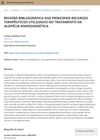Search
for
Sort by
Research
390-420 / 1000+ results
research Robotic Hair Restoration
Robotic hair restoration is a safe, efficient alternative to manual hair transplant, best for men with dark, thick hair and skin, requiring sufficient donor hair and postoperative care.
research An Induced Pluripotent Stem Cell-Based Approach for Hair Follicle Development and Regeneration
iPSCs show promise for hair regeneration but need more research to improve reliability and effectiveness.

research An Update in the Management of Alopecia Areata
New treatments for alopecia areata show promise, but more research is needed to confirm their effectiveness.

research Hair Growth Control by Innate Immunocytes: Perifollicular Macrophages Revisited
Immune cells around hair follicles help control hair growth and could be targets for treating hair disorders.

research A Comprehensive Review of Platelet-Rich Plasma for the Treatment of Dermatologic Disorders
Platelet-rich plasma can increase hair density and may help treat some skin conditions, but it's costly, not FDA-approved, and needs more research.

research Treatment of Alopecia Areata and Its Numerous Possibilities: A Literature Review
Alopecia areata treatment should be personalized, using topical or systemic therapies based on severity, with promising options like JAK inhibitors needing more research.

research Phototherapy of Androgenetic Alopecia with Low Level Narrow Band 655-nm Red Light and 780-nm Infrared Light
Red and infrared light therapy improves hair growth in balding patients.
research Evaluation of the Efficacy of Excimer Light 308 nm Wavelength Versus Low Level Laser in Treatment of Alopecia Areata
Excimer light therapy is more effective than low level laser therapy for treating alopecia areata.

research Algorithmic Approach to the Treatment of Frontal Fibrosing Alopecia: A Systematic Review
The review suggests there's no agreed treatment for Frontal Fibrosing Alopecia, but hydroxychloroquine and 5a-reductase inhibitors are most effective. New treatments like platelet-rich plasma and LED light could help if standard treatments fail.
research Low Level Laser Treatment for Patterned Hair Loss: A Systematic Review
Low level laser therapy may promote hair growth for patterned hair loss, but more research is needed.

research Lasers in the Management of Alopecia: A Review of Established Therapies and Advances in Treatment
Lasers and light therapies are effective in promoting hair regrowth for different types of hair loss.

research Potential Application of PBM in Hair Follicle Organoid Culture for the Treatment of Androgenic Alopecia
Light therapy might help treat hereditary hair loss by improving hair follicle growth in lab cultures.

research A Systematic Review of Laser-Based Treatments for Hair Loss
Laser treatments, especially low-level laser therapy, can improve hair growth, but more research is needed.
research The Use of Photobiomodulation Therapy in the Treatment of Hair Cycle Arrest in a Pembroke Welsh Corgi
Light therapy successfully treated a dog's hair growth problem without side effects.

research Reply to: The Use of Low-Level Light for Hair Growth: Part I
The letter criticizes a study's methods and small size, suggesting larger, better-designed research would show low-level light therapy effectively grows hair.

research Shedding Light on the FDA’s 510(k) Approvals Process: Low-Level Laser Therapy Devices Used in the Treatment of Androgenetic Alopecia
LLLT devices for hair loss need more research to define proper guidelines.

research Effect of Low-Level Laser Therapy or LED Therapy in Hair Growth in Combination with Infiltrations: A Case Control Study
Low level laser or LED therapy combined with infiltrations may help hair growth.

research Comparison of 15% Topical Minoxidil and Low-Level Laser Therapy for Androgenetic Alopecia: A 24-Week Clinical Trial
Minoxidil was more effective than laser therapy for hair loss, and the report also highlighted the need for more research on PRP for a different hair loss condition, the impact of social media on alopecia views, and a warning on turmeric causing nail discoloration.

research Advances in Hair Restoration
New techniques improve hair restoration success.

research Beyond Traditional Treatments: Exploring Cutting-Edge Approaches for Androgenetic Alopecia
New treatments like low-level laser therapy, platelet-rich plasma therapy, and micro needling show positive results for hair regrowth in people with genetic hair loss.

research Soft Tissue Wound Healing by Laser
Low-level laser therapy effectively reduces the size of pressure ulcers compared to placebo.

research Efficacy Assessment for Low-Level Laser Therapy in the Treatment of Androgenetic Alopecia: A Real-World Study on 1383 Patients
Low-level laser therapy is about 80% effective in treating hair loss, with best results in males, those who use it for over a year, and those with scalp conditions like dandruff and rash.

research Literature Review of Main Therapeutic Resources Used in the Treatment of Androgenetic Alopecia
Microneedling showed the most significant results for treating hair thinning in Androgenetic Alopecia.

research Recent Advances in Understanding of the Etiopathogenesis, Diagnosis, and Management of Hair Loss Diseases
New understanding and treatments for hair loss are improving, but more research is needed.
research Management of Androgenetic Alopecia: A Review
Combination therapies are more effective for treating androgenetic alopecia than single treatments.

research Effectiveness of Low-Level Laser Therapy in Lichen Planopilaris
Low-level laser therapy may reduce symptoms and increase hair thickness in lichen planopilaris patients.

research Hair Regrowth and Increased Hair Tensile Strength Using the HairMax LaserComb for Low-Level Laser Therapy
The HairMax LaserComb made hair grow more and get stronger for people with hair loss.

research The Shifting Preferences of Patients and Physicians in Nonsurgical Hair Loss Treatment
Minoxidil and Finasteride are the most popular hair loss treatments, with rising interest in other options, and economic or health crises can change what treatments people prefer.

research Comparative Efficacy of Minoxidil Alone Versus Minoxidil Combined With Low-Level Laser Therapy in the Treatment of Androgenic Alopecia: A Systematic Review and Meta-Analysis
Combining low-level laser therapy with minoxidil doesn't improve hair loss treatment compared to using minoxidil alone.